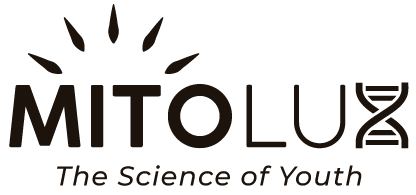For anyone invested in wellness and health optimization, red light therapy (or photobiomodulation) is a familiar name. Touted for its cellular benefits, especially with mitochondrial function, it's become a staple in many holistic practices. On the other hand, chlorophyll, the green pigment vital for photosynthesis in plants, has been consumed by humans for its potential health benefits. But what happens when these two worlds – the realm of red light therapy and the domain of chlorophyll – intersect? Let’s explore the intriguing cellular and chemical interactions between them.
Understanding Red Light Therapy
Before we delve deep into the interaction, let's understand the core principles of red light therapy. By emitting red and near-infrared light wavelengths, this therapy penetrates skin layers, reaching cells, and particularly, the mitochondria. Here, it stimulates ATP production, the energy currency of our cells, and regulates reactive oxygen species, protecting cells from oxidative damage (source).
Chlorophyll at a Glance
Chlorophyll is the green molecule responsible for capturing light in plants and turning it into energy through the process of photosynthesis. While its primary role in plants is well-understood, when consumed by humans, chlorophyll has been proposed to offer health benefits, from detoxification to skin health promotion (source).
Potential Interactions: Theory and Exploration
- Photodynamic Therapy (PDT) Foundation: Chlorophyll derivatives, especially chlorin, have been studied for their use in Photodynamic Therapy for cancer treatments. In PDT, a photosensitizer (like chlorin) is exposed to specific light wavelengths, generating reactive oxygen species that can destroy targeted cells. There's potential to explore whether red light, in conjunction with chlorophyll, could amplify such cellular interactions (source).
- Mitochondrial Enhancement: Both red light therapy and chlorophyll are related to energy production at the cellular level – albeit in different organisms. While red light boosts ATP production in human cells, chlorophyll captures light energy for plants. It's intriguing to theorize if chlorophyll, when present in human cells, could further optimize cellular energy production in response to red light exposure.
- Antioxidant Synergy: Chlorophyll and its derivatives have demonstrated antioxidant properties, neutralizing harmful free radicals. Considering that red light therapy also modulates reactive oxygen species, the combined antioxidant potential of red light exposure and chlorophyll consumption could be a topic for exploration source.
Experimental Challenges and Considerations
While the above interactions paint an optimistic picture, several challenges and considerations need addressing:
- Cellular Availability of Chlorophyll: When humans consume chlorophyll, its absorption, distribution, and concentration at the cellular level can vary. Whether enough chlorophyll can be present within human cells to interact significantly with red light is yet to be determined.
- Wavelength Specificity: Red light therapy involves specific wavelengths of light. Chlorophyll primarily absorbs light in the blue (430nm-450nm) and red (640nm-680nm) wavelengths. While there's overlap with red light therapy, the efficacy might differ depending on the exact wavelengths used (source).
- Limited Direct Research: It's crucial to note that, as of now, direct research on the combined effects of red light therapy and chlorophyll in humans is limited. Most of the potential interactions are based on separate studies and scientific reasoning.
Looking Ahead
The realm of wellness and health optimization is ever-evolving, with continuous discoveries broadening our understanding. While the potential synergistic effects of red light therapy and chlorophyll are promising, further dedicated research is crucial. Such studies would shed light on the exact cellular and chemical mechanisms at play and pave the way for innovative therapeutic applications.
In Conclusion
While the crossroads of red light therapy and chlorophyll is an exciting avenue to explore, it's still a budding area in the vast landscape of cellular health. As science advances, and more studies emerge, we can hope for clearer insights and perhaps even groundbreaking integrative therapies that harness the best of both worlds.
Note: The provided references are based on literature as of my last training cut-off in 2022. For the most recent and comprehensive findings, always consult new studies or professionals in the field.


